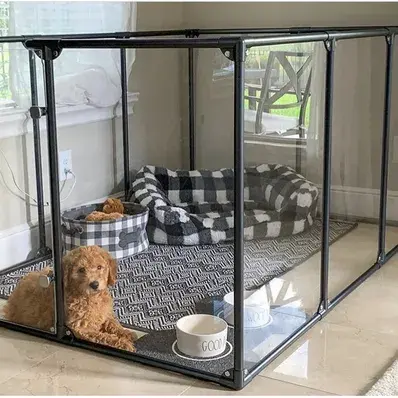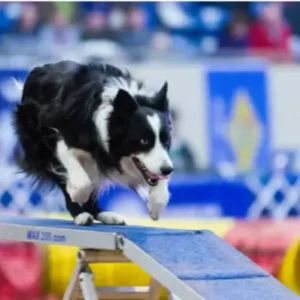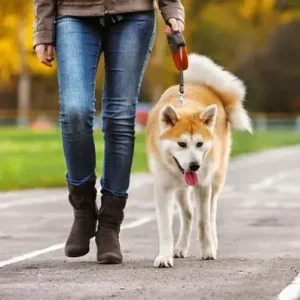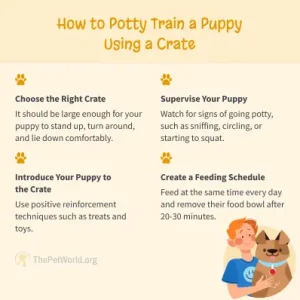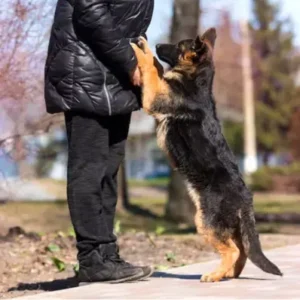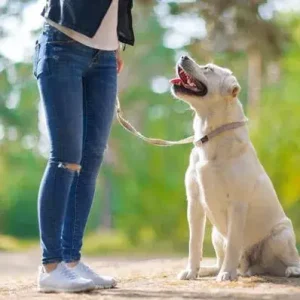Benefits of Crate Training Your Dog
Crate training offers numerous benefits that extend beyond just housebreaking:
- Safe Travel Companion: Whether you’re taking a short car ride or flying across the country, a crate can ensure your dog’s safety during travel.
- Assists with Housebreaking: Crate training helps puppies and adult dogs understand when and where it’s appropriate to go potty. It’s a major part of learning how to crate-train a dog for potty training.
- Comfortable Retreat: Dogs naturally seek out cozy spaces. A crate gives them a designated area to unwind, providing them with a sense of security.
- Prevents Destructive Behavior: When you’re not home to supervise, the crate keeps your dog from chewing on furniture or getting into unsafe situations.
How to Choose the Right Crate for Your Dog
Selecting the right crate is essential for successful crate training. Here are some factors to consider:
- Size: Choose a crate that’s large enough for your dog to stand, turn around, and lie down comfortably. A crate that’s too large might encourage accidents inside, while a small crate may feel too cramped.
- Material: Crates come in different materials, including wire, plastic, and fabric. Wire crates are well-ventilated and provide a clear view. Plastic crates offer a more enclosed, den-like feel. Fabric crates are lightweight and portable, making them ideal for travel.
- Portability: If you’re planning on traveling often, look for a crate that’s easy to move and set up.
- Durability: If your dog is a chewer, choose a durable crate that can withstand some wear and tear, such as a strong wire crate.
Steps to Crate Train Your Dog
Follow these practical steps to crate-train your dog effectively, creating a safe and comforting environment they’ll love. These steps will guide you in building trust and fostering good habits for years to come.
Step 1: Introduce Your Dog to the Crate
Introduce your dog to the crate gently by leaving the door open and letting them explore. Use treats, toys, or a blanket to make it inviting, creating positive associations.
Step 2: Start with Short Sessions
Start by closing the crate door briefly while your dog is inside, beginning with a few seconds and gradually increasing the time. To crate train a dog during the day, stay nearby and praise their calmness.
Step 3: Gradually Close the Door
Start by closing the crate door for longer periods and stepping away briefly once your dog is comfortable. Gradually increasing alone time is key when you crate train a dog with anxiety. Reward their calm behavior.
Step 4: Feed Your Pup in the Crate
Start feeding your dog inside the crate to create a positive association. Place the food bowl near the door and gradually move it further back as your dog becomes more comfortable. This is key when trying to crate train a dog who hates the crate.
Step 5: Crate Your Dog While You Are Home
To ensure your dog doesn’t associate the crate with being left alone, try crating them while you’re still at home. If you are learning how to crate train a dog with separation anxiety, it can be helpful to start with the crate nearby.
This allows the dog to associate the crate with calm and comfortable alone time. Your presence nearby helps them feel safe during the process. This helps them view the crate as a place for relaxation, not just isolation.
Step 6: Crate Your Dog When You Leave
Once your dog is comfortable in the crate at home, start crating them before you leave. This is important when learning how to crate train a dog with separation anxiety. Begin with short absences and leave them a chew toy or treat to make the experience positive.
Gradually increase the time you’re away to build their confidence. Always make your departures and returns low-key to prevent overexciting your dog, which can increase anxiety.
Step 7: Extend Crate Time Gradually
As your dog adjusts, you can begin leaving them in the crate for longer periods. If you’re focusing on how to crate train a dog fast, gradually increasing time and rewarding calm behavior will speed up the process. Avoid leaving them in the crate for too long, especially if they are still a puppy or young dog.
Common Crate Training Mistakes to Avoid
While crate training is a valuable tool, it’s important to avoid some common mistakes that can hinder your dog’s progress. By being aware of these issues, you can incorporate effective dog training tips. This will ensure that your training approach remains positive and beneficial for your dog.
- Using the crate as punishment: Never use the crate to punish your dog. The crate should be a positive place, not a place of isolation for bad behavior.
- Rushing the process: Crate training takes time. Moving too quickly can make your dog feel anxious or trapped.
- Leaving your dog in the crate too long: Dogs, especially puppies, shouldn’t be crated for too long. Provide them with plenty of breaks, exercise, and mental stimulation outside the crate.
Crate Training Problems and Solutions
Like any form of training, crate training can come with its challenges. If you’re facing issues, here are some tips to help solve common problems and make training easier for both you and your dog.
- The dog is afraid of the crate: If your dog shows fear of the crate, make the introduction slower. Use treats, food puzzles, and positive reinforcement to make the crate more appealing. How to crate train a dog with severe separation anxiety may require extra patience and small rewards.
- Excessive barking: If your dog barks or whines while in the crate, avoid rewarding this behavior. Wait for a moment of calm before you let them out.
- Accidents in the crate: If your dog has accidents inside the crate, it may be a sign that they haven’t learned how to hold their bladder for long periods. Ensure they have frequent potty breaks, especially during the initial training stages.
When to Stop Crate Training
Knowing when your dog breed is ready to graduate from crate training is just as important as the training itself. Once your dog is comfortable and well-adjusted to their crate, it’s time to gradually shift toward more freedom. Here’s how to tell when your dog is ready.
- Not having accidents in the crate: One of the first signs that your dog is ready to be left out of the crate is consistently keeping the crate clean.
- Being calm and relaxed when crated: A calm demeanor while crated indicates that your dog no longer views the crate as a source of stress.
- Sleeping through the night without fuss: Crate train a dog at night by gradually introducing nighttime crate sessions. If your dog can rest peacefully in the crate overnight without anxiety, it’s a good sign they’re ready for more freedom.
Crate training provides a safe environment for your dog. It also supports other training aspects. Patience and consistency are essential for success. By following this guide, your dog will become comfortable in the crate. This leads to a happier and well-adjusted pet.

